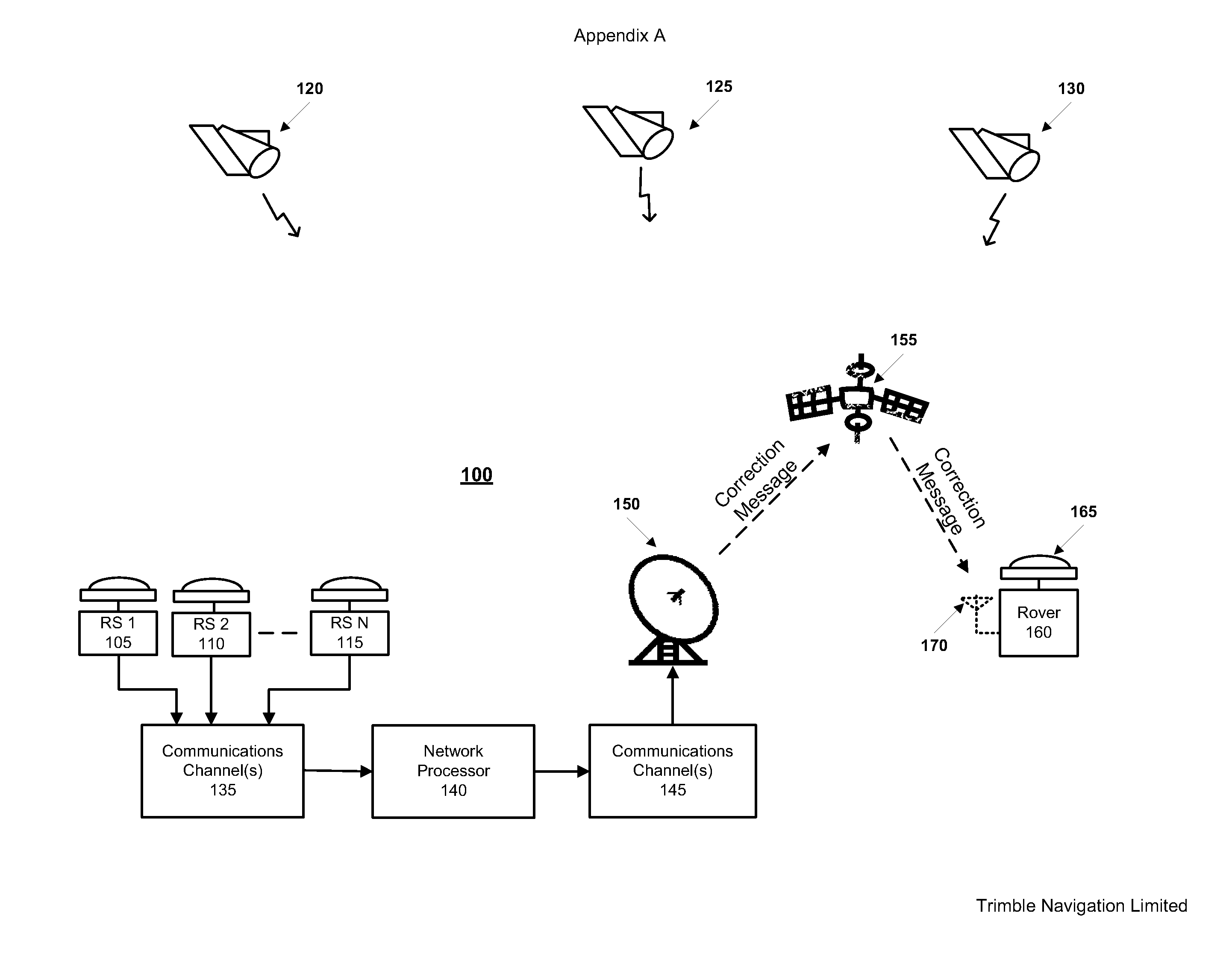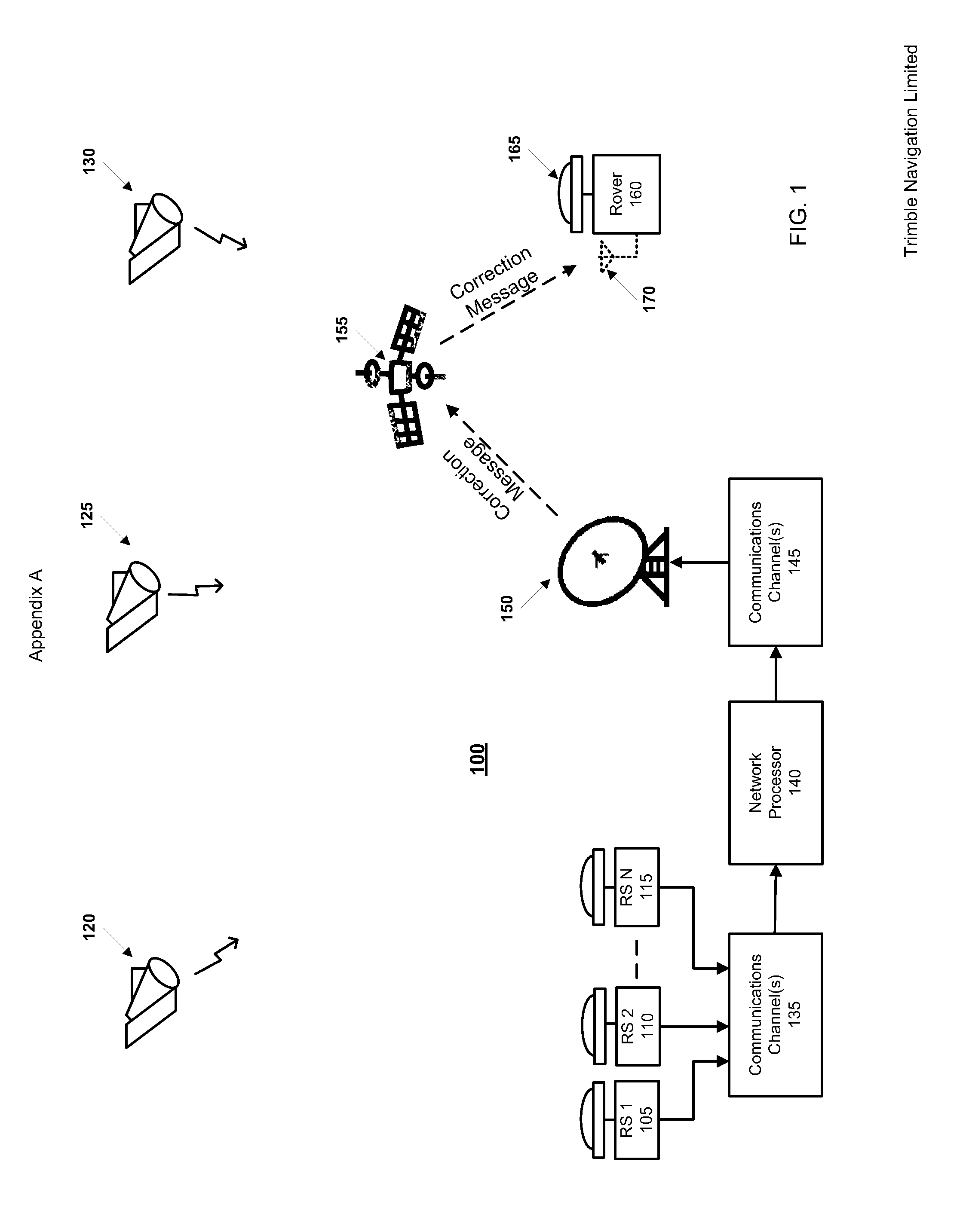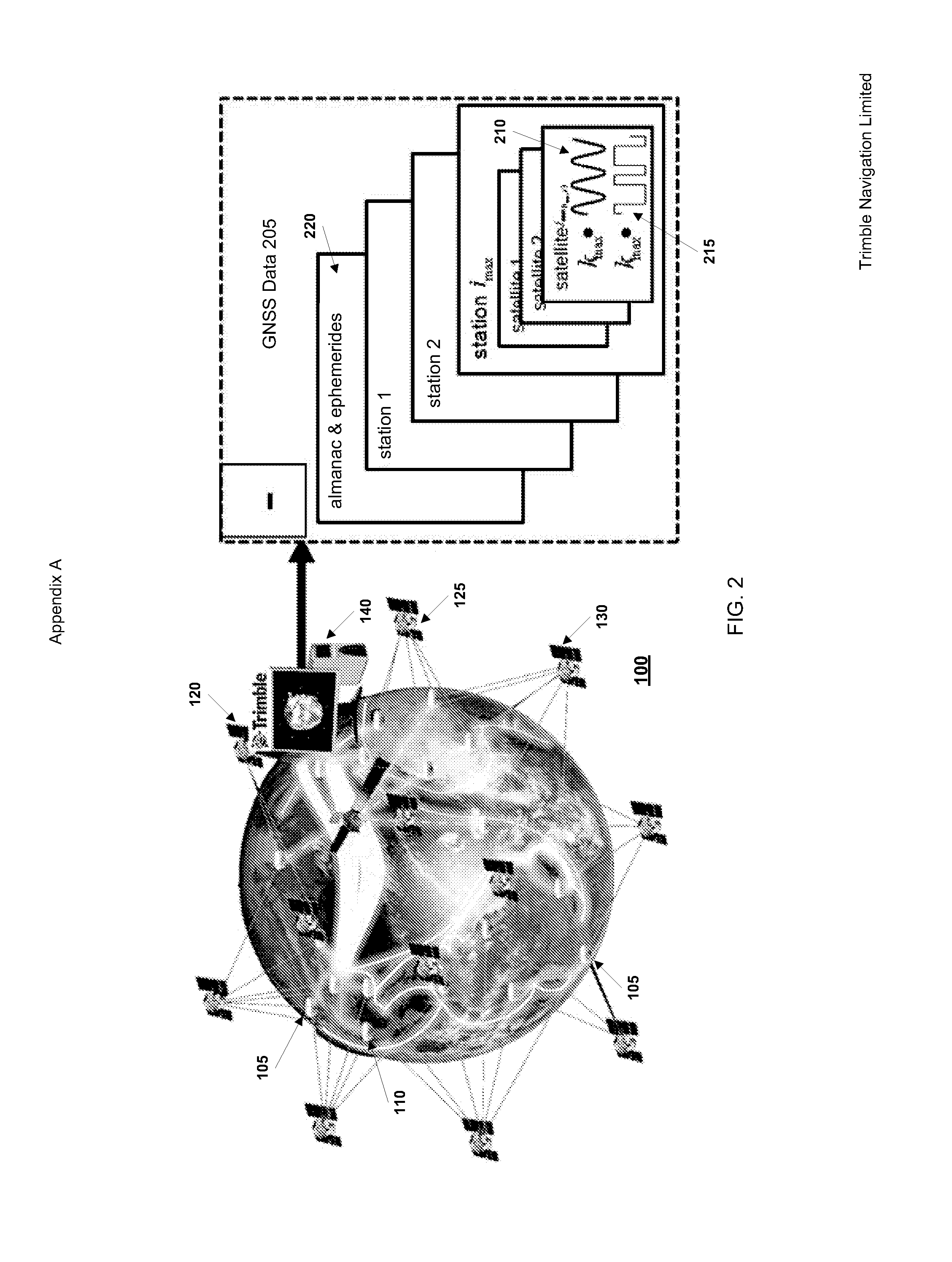GNSS Signal Processing with Ionospheric Bridging for Reconvergence
a signal processing and ionospheric bridge technology, applied in satellite radio beaconing, measurement devices, instruments, etc., can solve the problems of iono-free code inherently noisy, auxiliary code-carrier filter ambiguity estimates are also noisy, and the geometry filter is distorted into the future. to achieve the effect of reducing convergence/reconvergence times
- Summary
- Abstract
- Description
- Claims
- Application Information
AI Technical Summary
Benefits of technology
Problems solved by technology
Method used
Image
Examples
Embodiment Construction
[0036]Global Virtual Reference Station (GVRS) Positioning Principles
[0037]Overview
[0038]FIG. 4 shows an embodiment of Global Virtual Reference Station (GVRS) rover processing with GNSS satellite corrections (taken from FIG. 38 of U.S. Provisional Application for Patent No. 61 / 277,184 filed 19 Sep. 2009 (TNL A-2585P)). Rover receiver 3805 receives GNSS signals from multiple GNSS satellites, of which three are shown at 3810, 3815, 3820. Receiver 3805 derives GNSS data 3825 from code observations and carrier-phase observations of the GNSS signals over multiple epochs.
[0039]Precise satellite data 3830 for the GNSS satellites are received, via a correction message broadcast by a communication satellite 3835 in this case, or by other means, such as wireless Internet. The correction messages are decoded by a message decoder 3832. A Synthesized Base Station (SBS) module 3835 receives the precise satellite data 3830 and also receives information which it can use as a virtual base location, s...
PUM
 Login to View More
Login to View More Abstract
Description
Claims
Application Information
 Login to View More
Login to View More - R&D
- Intellectual Property
- Life Sciences
- Materials
- Tech Scout
- Unparalleled Data Quality
- Higher Quality Content
- 60% Fewer Hallucinations
Browse by: Latest US Patents, China's latest patents, Technical Efficacy Thesaurus, Application Domain, Technology Topic, Popular Technical Reports.
© 2025 PatSnap. All rights reserved.Legal|Privacy policy|Modern Slavery Act Transparency Statement|Sitemap|About US| Contact US: help@patsnap.com



